|
I recently discovered a small, but lovely community called STEMN, the Science, Technology, Engineering, and Math Network. It is a collaboration tool for people all over the world to contribute to space projects. People post projects and questions and get feedback. and answers. I have seen a lot of student CubeSat projects there, and while students (as expected), have a lot to learn, I have noticed that many of them struggle more in the area of thermal analysis. That is why I made a tutorial to help students understand the thermal environment, perform basic analysis, and design for passive thermal control.
1 Comment
 I actually took this photo myself. I actually took this photo myself. In the summer of 2009 I got the amazing opportunity to be an intern at the Jet Propulsion Lab as a rising junior. To make it even better, I was lucky enough to be part of the most exciting, scientifically promising, and coolest space project that was happening anywhere in the world - The Mars Science Laboratory. I was assigned as an Intern to the Surface Sampling Subsystem (SSS) and was Mentored by Daniel Limonadi and Jason Feldman. Daniel was the Validation and Verification Phase Lead for SSS, and Jason Feldman was the JPL project manager for the Sample Analysis at Mars (SAM) instrument. The SSS system includes the rovers arm, all of the attachments and appendages on the arm (including everything on the turret), the spare drill bits on the front over the rover, and the analytical instruments inside the rover which will process the regolith (soil) samples. The purpose of my project at JPL was to perform software testing for the two analytical instruments which were onboard the Mars Science Laboratory. These two instruments are called SAM and CheMin.  SAM. In all her glory. SAM. In all her glory. SAM is the largest, heaviest, and most expensive instrument on-board the rover, and will also be the most capable scientific instrument ever sent to the surface of another planet. It contains a quadrapole mass spectrometer, a tunable laser spectrometer, and a six-column gas chromatograph. It really is a very impressive chemistry laboratory in a box. A box which is now inside the rover Curiosity, and will soon be on Mars. The other analytical instrument on MSL is called the Chemistry and Minerology instrument, or better known as CheMin. I did functional level testing of the software in two different ways. I did most of my work on a software simulation of the hardware and operating system. This system was called WSTS (Work Station Test Setup), and allows developers to quickly test software right from their desks. This is a huge benefit to expedite development. I also tested software on hardware simulations, which were kept in the test-bed and were ESD sensetive. This allowed me to compare my results, and I could not only test to make sure that the current software release for the two instruments was functional, but also evaluate the fidelity of WSTS by comparing the results. I didn't always have an easy time with this project, I had a lot of learning to do about software testing and testing in general as I designed and developed the tests. I also needed to learn how to use a lot of tools in order to actually perform the tests. I was able to use scripts to turn command lists into batches that could run so I did not have to enter each one individually. 2:53 am MST- We have just entered the final hold for the Taurus XL which should, in less than 20 minutes, blast off from Vandenberg air-force base. If it does this all right, NASA's Glory aerosol measuring spacecraft as well as three university built Cubesats, including our own, explorer 1 [prime].
Over a week ago we had our first launch attempt, with a lot of tension and drama. To enter the A-train orbit, there is only a very tight 47 second launch window available each day. And if you are launching the rocket south, then it happens at about 3am. More people are here than there were last time as well, because on the previous attempt about half a dozen of the most prominent contributors were in California. 2:58 am I am not sure what has happened, but the launch window has apparently shrunk to only 24 seconds, and there is 10 minutes left on the clock. Last time the same thing happened during the final hold, and it was a nerve wracking moment to see the launch window quickly shrink in front of our eyes. Before we were relaxed, but as we went in to the final hold it is starting to tense up. There are still many items left on the checklist, and hopefully all of them will pass without incident. The big moment will be for the item called "S-Band on" which is where the clock stopped the last time and the mission was scrubbed. We just passed.!!! So it appears that orbital sciences successfully fixed the issues plaguing us last time. 6 minutes left on the clock, 3:30 am Passed the final launch poll... T-5 people are getting really quiet now. Still 24 seconds left in the launch window. Auto Sequence Start-up at T-1:15 1 minute.... 30 sec. everyone standing successful launch, first stage normal. 16 minutes until cubesat deployment. Max Q.. The Faring once again did not separate. This happened last time on the Orbital Carbon Observatory, and it is disappointing to see this issue come up again. The only thing that we have keeping us together is knowing that we already had a flight lined up for Flight-unit 2. Go Flight unit 2!  So, it is clear that the ejection charge was not able to save the rocket from destruction, and it did not go off until it went below the trees. When the pieces of the rocket were recovered, it landed about 435 feet away from the launch pad. That makes me feel pretty good knowing that it was that far away from everybody. After studying the wreckage and where all of the pieces landed, I think that I can completely determine what happened in the few moments before impact. We lost visual sight of the rocket in the trees, and never saw the ejection charge fire. However, from the soot and black-powder remnants left on the rocket I can conclusively determine that the ejection charge definitely went off before the rocket split up. I believe what happened at this point was instead of ejecting the forward section from the interstage and deploying the flagging to slow its descent, it instead blew the rocket apart right before the interstage, keeping the forward part of the rocket and the interstage together. The flagging, sadly, was ripped to shreds by the shock and small pieces were scattered around the area. When exposed to the cold the flagging became much more brittle than I had expected. Once the rocket was split into two pieces, the aft piece of the rocket was still composed of three layers of cans. The middle layer made contact with a dead tree, puncturing a can and separating it from the other two pieces. I reasoned this from the lack of damage on the other two layers of the aft section, and the placement of all three layers. There was also an ugly looking dead tree that was in just the right place for it to all make sense. Captions under full-sized images. The only piece of the puzzle that I was not able to satisfactorily figure out is what happened to the nose cone of the rocket. I tried looking around for it pretty hard, but was never able to find it. I may try again during the summer, although I think I would be even less likely to find it then.
I wanted to do something while I was home on break from school. While my initial plans were totally different and more complex, I think I can be proud of the recycled rocket. This was meant to be a continuation of the Coors 1-X beer can based rocket body, and act as a stepping stone to the Coors V, allowing me to experiment with a transitions between can configurations that differ between levels. For example, this rocket transitioned from a level of 4 MGD cans to two levels of 3 Coors Light cans then to two levels of single Coors Light cans and finally to a bottle of Alaskan Oatmeal Stout for the nosecone. I was able to obtain some F20-4W (20 newtons average thrust, 4 sec ejection charge delay after burnout, white flame). I also collected as many beer cans as I reasonably could. This rocket became known as the "Recycled Rocket" because I used much more than just beer cans, relying heavily on cardboard for the construction of not just fins but also stage adapters and interstage. Recycled paper was used for the aerodynamic nose cone; This rocket was made out of 100% post-consumer waste, excluding the tape, epoxy, hot glue and rocket motor. The first photo gallery shows some of the construction of the rocket. (click images for captions) So admittedly, some of the criticisms of this project could of course be the use of glass in the nose of the rocket and the lack of a slow-recovery system. In defense of such possible criticism, the reader should be made aware, and can see in the videos of the rocket launch, that the launch range used was entirely private and massive (several miles of possible range), and the rocket was launched at a lower QE (launch angle WRT normal) to get as far away from structures or observers. Video of the Launch:  'Recovery' 'Recovery' You can see another video from a different angle here. Unfortunately the aspect ratios which I captured that at didn't allow me to edit it using iMovie 6. That's what I get for holding my iPhone vertical I guess. It is impossible to see the apogee or descent of the rocket in these videos unfortunately, but the rocket was sufficiently heavy that it went behind the trees before we saw an ejection charge. I made some guesses at the coefficient of drag of the rocket, and using Excel modeled a 1-dimensional flight path of the rocket. that model seems to have since been corrupted, but I think I estimated an upper limit apogee of around 300 m or more. With negligible drag in free fall, this would mean about a 4 second fall. Including the coast time of the rocket, the ejection charge was never going to fire very high anyways due to the large weight of the motor. Unfortunately adjusting the delay timing was not possible. I will have more on the recovery and crash analysis next post. |
Lars OsborneBS Mechanical Eng Categories
All
|

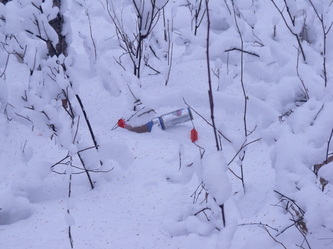





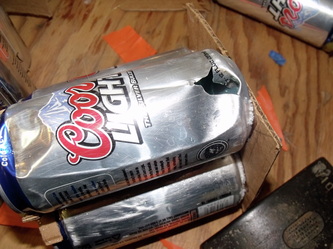


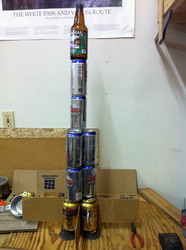

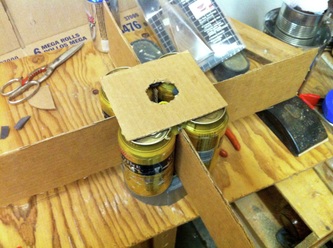
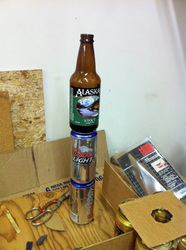



 RSS Feed
RSS Feed
